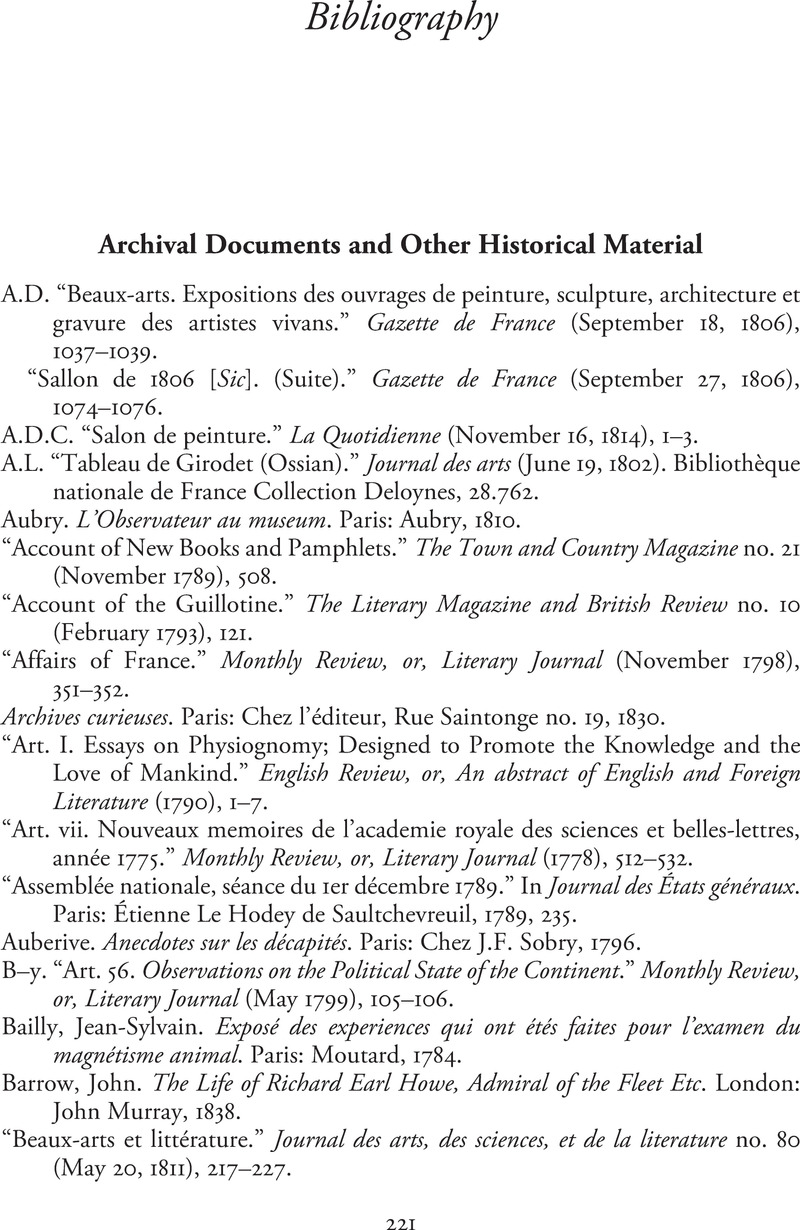Book contents
- Art, Science, and the Body in Early Romanticism
- Cambridge Studies in Romanticism
- Art, Science, and the Body in Early Romanticism
- Copyright page
- Contents
- Figures
- Acknowledgments
- Introduction
- Chapter 1 De Loutherbourg’s Mesmeric Effects
- Chapter 2 Fuseli’s Physiognomic Impressions
- Chapter 3 Girodet’s Electric Shocks
- Chapter 4 Self-Evidence on the Scaffold
- Notes
- Bibliography
- Index
- Cambridge Studies In Romanticism
- References
Bibliography
Published online by Cambridge University Press: 28 October 2021
- Art, Science, and the Body in Early Romanticism
- Cambridge Studies in Romanticism
- Art, Science, and the Body in Early Romanticism
- Copyright page
- Contents
- Figures
- Acknowledgments
- Introduction
- Chapter 1 De Loutherbourg’s Mesmeric Effects
- Chapter 2 Fuseli’s Physiognomic Impressions
- Chapter 3 Girodet’s Electric Shocks
- Chapter 4 Self-Evidence on the Scaffold
- Notes
- Bibliography
- Index
- Cambridge Studies In Romanticism
- References
Summary

- Type
- Chapter
- Information
- Art, Science, and the Body in Early Romanticism , pp. 221 - 247Publisher: Cambridge University PressPrint publication year: 2021

